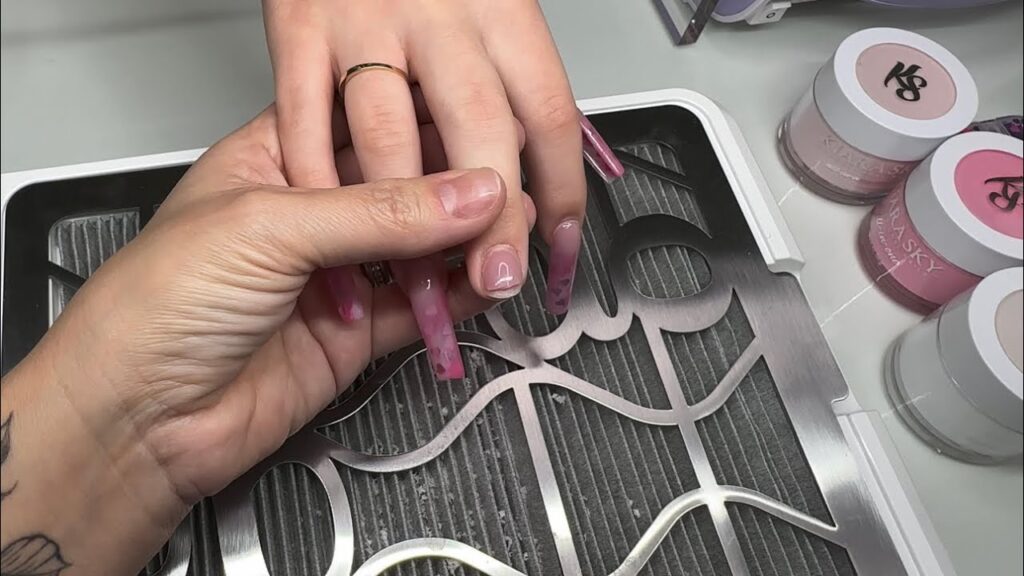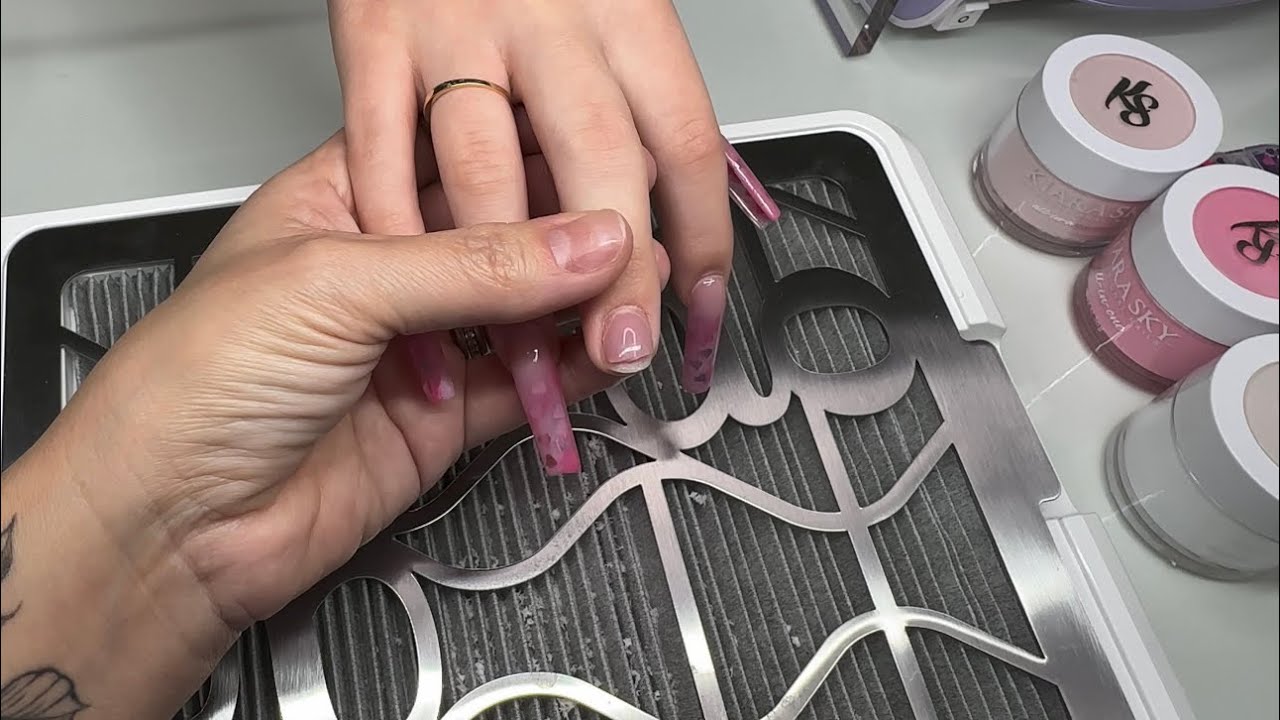
How to Fix a Cracked Acrylic Nail: A Comprehensive Guide
A cracked acrylic nail can be a frustrating and unsightly problem. Whether it’s a minor hairline fracture or a more significant split, a cracked nail not only compromises the aesthetic appeal of your manicure but can also be painful and lead to further damage or even infection if left unattended. Understanding how to fix a cracked acrylic nail is crucial for maintaining the health and appearance of your nails. This comprehensive guide will walk you through various methods, from quick temporary fixes to more permanent solutions, ensuring you can confidently address this common nail emergency.
Understanding Acrylic Nail Cracks
Before diving into the solutions, it’s important to understand why acrylic nails crack in the first place. Several factors can contribute to this issue:
- Impact: A sudden blow or impact to the nail is a common cause of cracks.
- Weak Application: If the acrylic wasn’t applied correctly or the layers are too thin, the nail is more susceptible to cracking.
- Dehydration: Dry acrylic nails can become brittle and prone to cracking.
- Length: Longer acrylic nails are more vulnerable to breakage due to increased leverage.
- Poor Quality Products: Using low-quality acrylic powders or liquids can result in weaker nails.
Recognizing the cause of the crack can help you prevent future occurrences. Now, let’s explore the methods for how to fix a cracked acrylic nail.
Temporary Fixes for Minor Cracks
For small, hairline cracks that aren’t causing significant pain or instability, a temporary fix might suffice. These methods are designed to prevent the crack from worsening until you can implement a more permanent solution.
Using Nail Glue
Nail glue is a readily available and effective option for temporarily sealing a cracked acrylic nail. Here’s how to use it:
- Clean the Nail: Gently clean the cracked area with a nail brush and acetone-free nail polish remover to remove any debris or oils.
- Apply Glue: Carefully apply a small amount of nail glue directly into the crack. Avoid getting glue on your skin.
- Hold the Crack Together: Gently press the edges of the crack together and hold for 30-60 seconds until the glue dries.
- Buff the Surface: Once the glue is dry, lightly buff the surface of the nail to smooth out any unevenness.
- Apply Top Coat: Finish with a layer of top coat to seal the repair and add shine.
This method provides a quick and easy way to stabilize the crack and prevent it from snagging or worsening. However, it’s important to note that this is only a temporary solution, and a more permanent repair will be needed to fully restore the nail’s integrity. If you are uncomfortable with nail glue, consider seeking professional help to learn how to fix a cracked acrylic nail.
Using a Tea Bag or Silk Wrap
Another temporary fix involves using a tea bag or silk wrap to reinforce the cracked area. This method provides a bit more stability than nail glue alone.
- Prepare the Nail: Clean the nail as described above.
- Cut the Tea Bag/Silk Wrap: Cut a small piece of a tea bag or silk wrap slightly larger than the crack.
- Apply Glue: Apply a thin layer of nail glue over the crack.
- Apply the Tea Bag/Silk Wrap: Carefully place the tea bag or silk wrap over the glued area, ensuring it covers the entire crack.
- Press and Smooth: Gently press the tea bag or silk wrap onto the nail, smoothing out any wrinkles or air bubbles.
- Apply More Glue: Apply another thin layer of nail glue over the tea bag or silk wrap.
- Trim and Buff: Once the glue is dry, trim any excess tea bag or silk wrap and lightly buff the surface to smooth it out.
- Apply Top Coat: Finish with a layer of top coat to seal the repair.
This method creates a stronger bond and provides more support to the cracked area. It’s a good option for slightly larger cracks or for those who want a bit more durability in their temporary fix. This method is a great way to learn how to fix a cracked acrylic nail temporarily.
Permanent Solutions for Cracked Acrylic Nails
While temporary fixes can provide immediate relief, they are not long-term solutions. For a more permanent repair, consider these options:
Acrylic Patch Repair
An acrylic patch repair involves using acrylic powder and liquid to fill in the crack and reinforce the nail. This method requires some skill and practice but can provide a strong and lasting repair.
- Prepare the Nail: Clean the nail thoroughly and gently file down the surface around the crack to create a smooth base.
- Apply Primer: Apply a thin layer of acrylic primer to the cracked area.
- Mix Acrylic: Mix a small amount of acrylic powder and liquid to create a smooth, workable bead.
- Apply Acrylic to Crack: Carefully apply the acrylic mixture to the crack, filling it in completely and blending it with the surrounding nail.
- Shape and File: Once the acrylic is dry, use a file to shape and smooth the repaired area, blending it seamlessly with the rest of the nail.
- Buff and Polish: Buff the surface to a smooth finish and apply a layer of top coat or nail polish.
This method provides a durable and long-lasting repair. It’s ideal for larger cracks or those that are causing significant instability. Practicing proper technique is key to achieving a seamless and natural-looking repair. A salon professional can guide you on how to fix a cracked acrylic nail using this method.
Acrylic Overlay
An acrylic overlay involves applying a thin layer of acrylic over the entire nail, providing additional strength and support. This method is particularly useful for nails that are prone to cracking or for those who want to prevent future damage.
- Prepare the Nail: Clean and file the nail as described above.
- Apply Primer: Apply a thin layer of acrylic primer to the entire nail.
- Apply Acrylic: Apply a thin, even layer of acrylic over the entire nail, extending it to the desired length and shape.
- Shape and File: Once the acrylic is dry, use a file to shape and smooth the nail, ensuring it is even and symmetrical.
- Buff and Polish: Buff the surface to a smooth finish and apply a layer of top coat or nail polish.
This method not only repairs existing cracks but also strengthens the nail, making it less susceptible to future damage. It’s a great option for those who want to maintain the health and appearance of their acrylic nails. This is an effective way to learn how to fix a cracked acrylic nail and prevent future issues.
Professional Repair
If you’re not comfortable performing these repairs yourself, or if the crack is severe, it’s always best to seek professional help. A qualified nail technician can assess the damage and recommend the most appropriate course of action. They have the expertise and tools to perform a safe and effective repair, ensuring your nails are healthy and beautiful. [See also: Choosing the Right Nail Salon]
Preventing Acrylic Nail Cracks
Prevention is always better than cure. Here are some tips to help prevent acrylic nail cracks:
- Proper Application: Ensure your acrylic nails are applied correctly by a qualified technician.
- Regular Maintenance: Schedule regular fill-ins to maintain the strength and integrity of your nails.
- Avoid Impact: Be mindful of your nails and avoid activities that could cause them to crack or break.
- Hydration: Keep your nails and cuticles hydrated with a good quality cuticle oil.
- Wear Gloves: Protect your nails when doing household chores or working with harsh chemicals.
- Choose Shorter Lengths: Opt for shorter acrylic nails to reduce the risk of breakage.
By following these tips, you can significantly reduce the likelihood of experiencing cracked acrylic nails. It’s also important to choose reputable nail salons and use high-quality products to ensure the health and longevity of your manicure. Learning how to fix a cracked acrylic nail is helpful, but preventing it is even better.
When to Seek Professional Help
While many minor cracks can be repaired at home, there are certain situations where it’s best to seek professional help:
- Severe Cracks: If the crack extends deep into the natural nail or is causing significant pain.
- Infection: If you notice any signs of infection, such as redness, swelling, or pus.
- Unsure: If you’re not comfortable performing the repair yourself or are unsure of the best course of action.
A professional nail technician can properly assess the damage and provide the appropriate treatment, ensuring your nails remain healthy and beautiful. Don’t hesitate to seek their expertise when needed. Understanding how to fix a cracked acrylic nail is important, but knowing when to seek professional help is crucial for maintaining nail health.
Conclusion
Dealing with a cracked acrylic nail can be a minor inconvenience or a major headache, depending on the severity of the damage. Knowing how to fix a cracked acrylic nail, whether through temporary measures or more permanent solutions, empowers you to maintain the appearance and health of your nails. By understanding the causes of cracks, practicing proper prevention techniques, and seeking professional help when needed, you can ensure your acrylic nails remain beautiful and strong. Remember, regular maintenance and mindful care are key to keeping your nails in top condition. Now you are equipped with the knowledge of how to fix a cracked acrylic nail.

